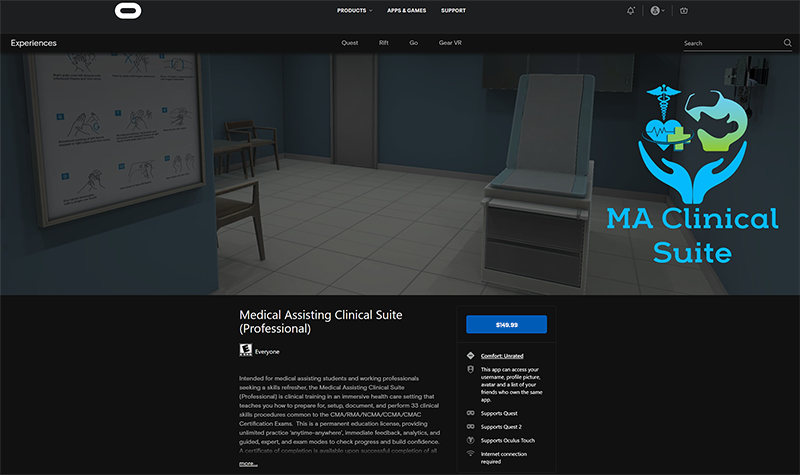A medical assistant may be asked to remove sutures. This lab teaches you how to prepare for and perform safe and correct methods for removing sutures: with an arm wound as an example, you must remove all of the sutures and use steri-strips as required.
This lab is based on the entry-level competencies for which the Commission on Accreditation of Allied Health Education Programs (CAAHEP) and Accrediting Bureau of Health Education Schools (ABHES) test the Medical Assistant.
Learning Sequence Builds Confidence
The learner practices the procedure in the ‘guided mode’ (interaction hints and an expanded checklist guide) as often as they like.
When the learner is confident that they can accurately demonstrate the procedure without error, the learner plays the level in the ‘expert mode’ (no hints or checklist explanations) - which they can repeat as often as they wish.
Finally, when the learner is confident that they have mastered the procedure - they take a one-time ‘exam’ attempt which results in their grade for that procedure.
The Medical Assisting Clinical Suite (Professional) Edition is available for purchase through the Oculus AppLab for $149.99
Features
Guided Mode - ghosted hints show step-by-step positions, learner can 'see through' the patient to verify placement.
Oculus Quest Affordability & Ease of Use - next generation game development processes allow the untethered, mobile VR to present effective visual and interaction fidelity at 1/4 of the cost of desktop VR.
Feedback - Cloud-based enterprise incorporates real-time data acquisition that allows learner to track progress and mastery, and provides detailed insights for debrief with faculty.
Support - Enterprise incorporates Knowledge Base (with tutorial videos & FAQ) - combined with help desk support staff for learners and staff.
Suture Removal Checklist
- Gather supplies
- Perform handwashing
- Review the doctor’s order
- Open and arrange the suture removal pack. Start by opening the outer layer.
- Open the inner layer of the suture removal pack using an aseptic technique.
- Open remaining equipment.
- Don non-sterile gloves
- Call the patient to the treatment room
- Introduce yourself, ask them to identify themselves with their full name and date of birth.
- Assess the patient’s condition, ask about their risks for impaired wound healing, allergies, and their current level of pain.
- Explain the procedure and obtain verbal consent, allow patient time to ask questions.
- Ask the patient to assume a comfortable position that allows easy access to the sutures.
- Place a disposable drape under the area of the wound.
- Remove dressing and expose the wound area.
- Assume a comfortable position adjacent to the wound. Ensure that there is sufficient lighting on the suture line.
- Inspect the wound and suture line for signs of infection or wound separation.
- Remove non-sterile gloves
- Perform handwashing.
- Don sterile gloves.
- Place a sterile drape on either side of the wound.
- Clean wound with antiseptic swab.
- Place gauze close to the wound site.
- Pickup forceps with the non-dominant hand.
- Pickup scissors with the dominant hand.
- Remove every other suture by grasping the knot with the forceps, cutting the suture, and pulling it from the wound.
- Clean the area of the wound where every other suture has been removed.
- Apply sterile adhesive strips in each area where the sutures were removed.
- Remove remaining sutures.
- Clean the area of the wound where the remaining sutures have been removed.
- Apply sterile adhesive strips in each area where the sutures were removed.
- Count the removed suture pieces to verify that all sutures are completely removed.
- Apply dressing over the wound.
- Inform the patient that the sterile strips will fall off by themselves in about 10 days.
- Discard remaining supplies, remove gloves, and perform hand hygiene.
- Document the procedure and findings according to agency policy.

